Are Barefoot Shoes Good for Hiking? Here’s What You Need to Know
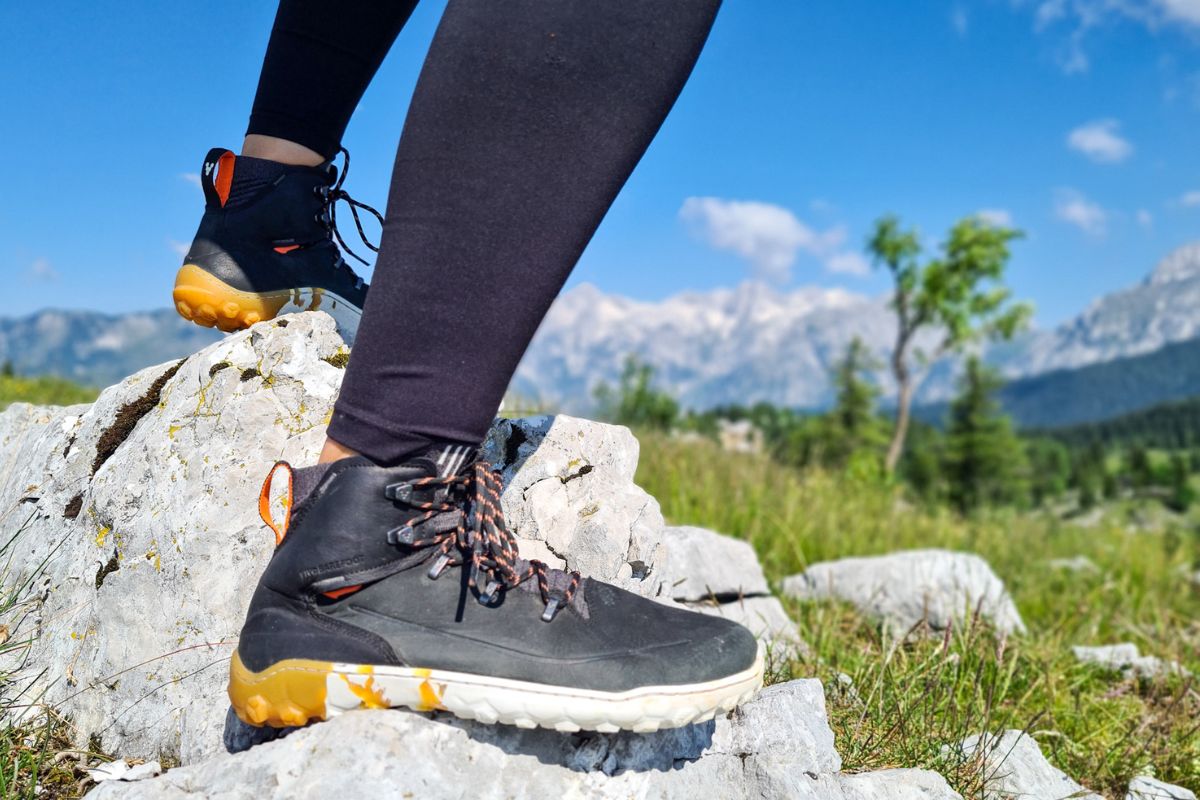
If you’re into hiking and curious about barefoot shoes, you’ve probably asked yourself:
“Are Barefoot Shoes Good for Hiking?”
The short answer is: Yes—if you do it right.
Barefoot shoes offer freedom, flexibility, and a natural connection to the ground. But are they good for rugged trails, long distances, and uneven terrain? Let’s explore the pros, the limitations, and how to make barefoot hiking work for you.
What Are Barefoot Shoes, Exactly?
Before we dive into hiking, let’s clarify what barefoot shoes are:
- Zero-drop sole: No difference in height between heel and toe.
- Flexible sole: Lets your foot move naturally and adapt to the ground.
- Wide toe box: Gives your toes room to spread and grip.
- Minimal cushioning: Encourages your feet to absorb shock on their own.
Sounds like the opposite of a typical hiking boot, right? That’s because barefoot hiking is a different experience—one that relies on your body’s natural movement and strength.
✅ Benefits of Hiking in Barefoot Shoes
1. Free Your Ankles for Better Mobility
Traditional hiking boots often act like ankle casts—restricting movement and reducing the foot’s natural ability to stabilize. Barefoot hiking shoes let your ankles move freely, engaging the right muscles when the trail gets tricky.
Your ankles don’t need to be braced—they need to be used.
2. Lightweight and Packable
Barefoot shoes are super light—great for long treks or when you want to carry a backup pair. Less weight on your feet means less fatigue and more energy on long hikes. You’ll feel fast, light, and nimble.
3. Better Ground Feel = Faster Reactions
The thin, flexible soles give you better proprioception—the ability to sense and respond to your environment. When you wear barefoot shoes, you can feel the trail beneath your feet, which helps with balance and coordination. You react faster to obstacles like rocks, roots, and inclines. More ground feel = quicker reactions and fewer sprains.

4. Natural Toe Splay = Better Stability
That wide toe box lets your toes spread and grip naturally, providing a larger surface area for balance. This improves traction and control—especially when scrambling over rocks or navigating shifting terrain.
Happy toes = happy hiker.

5. Stronger, More Adaptable Feet
Minimal structure means more muscle activation—and stronger, more adaptable feet over time. Barefoot shoes engage the muscles in your feet and ankles more than traditional hiking boots, helping you build strength and resilience to handle uneven terrain with ease.
⚠️ Challenges and Considerations
1. Less Cushioning = More Ground Impact
Rocky or root-heavy trails can feel intense if your feet aren’t used to it. Sharp gravel, downhill slopes, or long distances can be tough on underprepared feet.
Tip: Choose barefoot shoes with slightly thicker soles (8–12 mm) for more protection on rough trails and gradually progress to thinner soles as your feet adapt and grow stronger.

2. Foot Strength Matters
Barefoot hiking isn’t ideal for total beginners. If your feet aren’t used to barefoot movement, going full-day hiking in minimalist shoes could lead to soreness or injury.
Most regular shoes have supported your feet for years—often doing the work that your muscles should be doing. This can leave your feet weaker and less adaptable. Barefoot shoes shift that responsibility back to your muscles, so they need time to wake up and get strong again.
Tip: Start with shorter hikes on easier trails before tackling more demanding terrain. This helps your foot muscles build strength gradually and reduces the risk of overuse injuries.
If you’re just starting out, our Transitioning to Barefoot Shoes Guide is a great place to start.
3. Less Ankle Support (That’s OK)
Barefoot shoes don’t provide ankle support—but strong, healthy feet and ankles don’t need it. Research shows that unrestricted movement and stronger muscles lead to better joint control and fewer injuries over time.
Barefoot Hiking Boots vs. Barefoot Hiking Shoes
Wondering if you need barefoot boots or shoes?
Both offer the same benefits—zero-drop, wide toe box, and flexibility—but with different strengths.

Barefoot hiking shoes:
- Easy to pack and quick to put on
- More ankle freedom
- Great for warm-weather trails
Barefoot hiking boots:
- Slightly more warmth and protection
- Better for colder weather or rocky terrain
- Still flexible, but some models may feel more structured depending on the material and lacing
Ultimately, both can work—you just need to match the model to your needs and terrain.
For snow and winter hiking, take a look at our barefoot snow boots for outdoor conditions.
Does Sole Thickness & Tread Matter?
Absolutely.
While all barefoot hiking shoes share the same foundational features, they differ in:
- Sole thickness (from very thin to thicker minimalist)

- Tread depth and grip pattern

Deeper lugs = better traction. Thicker soles = more comfort on rough trails. But grip isn’t just about tread—it also depends on how well the shoe bends and lets your foot grip the surface.
If the sole doesn’t flex, your foot can’t do its job.
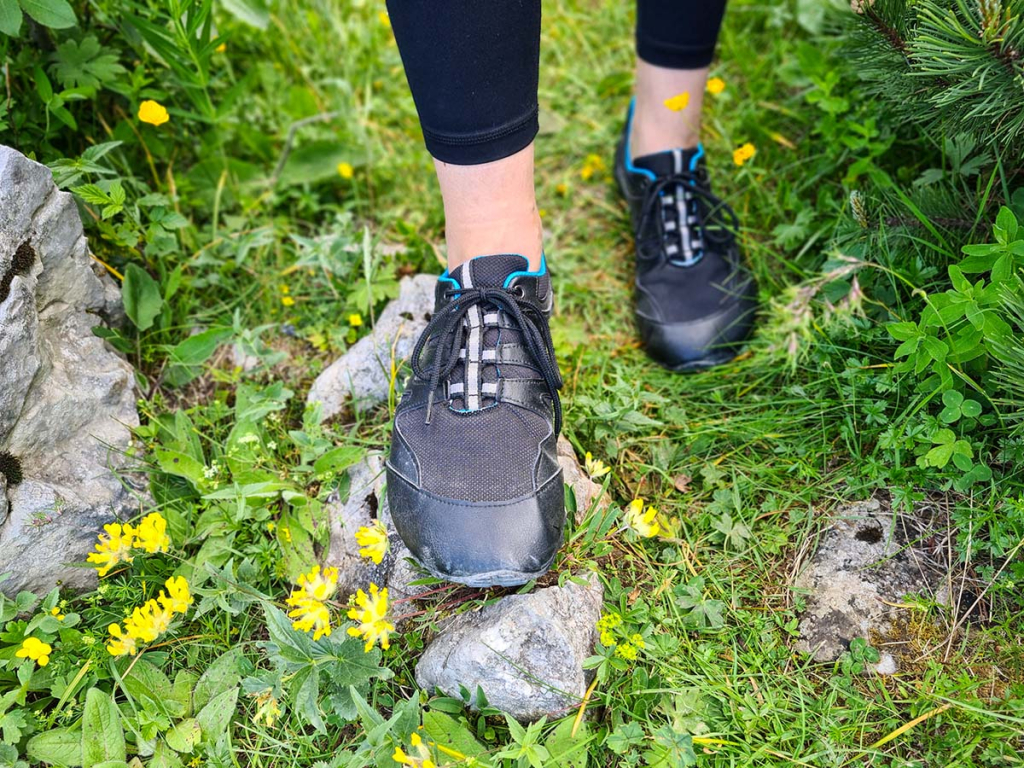
Tips for Finding the Right Size and Fit
Fit is everything in barefoot shoes—and even more so for hiking.
- Leave at least 12 mm in front of your toes for foot swell and downhill walking.
- Socks matter: Thicker socks or toe socks take up space. Try them on with the socks and insoles you plan to use.
- Test the width: Can your toes fully splay inside the shoe?
- Seasonal variation: Summer? Thin socks or no socks. Winter? Thicker insoles and warm socks.
Not sure what shape your feet are? This guide can help you find the best fit.
Pro tip: Use your index finger to check toe space—especially when your foot is fully loaded.
Explore our favorite toe socks for hiking to keep your feet happy and comfortable on longer trails.

Best Barefoot Hiking Shoes (and Boots!)
Here are some top picks we’ve tested and loved:
For Rocky and Technical Trails
- Vivobarefoot Tracker – Waterproof, rugged, and highly durable. Use BU15 for 15% discount
- Xero Shoes Xcursion Fusion – Weather-ready boot with good grip.
- Freet Tundra / Ibex – Great balance of flexibility, grip, and protection. Use bu-freet for 10% discount.
For Lighter Trails or Everyday Hikes
- Ahinsa Chitra Trek& Trail – Soft, flexible, great for mixed terrain. Use BU10 for 10% discount
- Lems Trailhead – Thicker sole, but a nice option for those easing into barefoot hiking. Use BU10 for 10% discount at Lems EU
These are just a few highlights—we’ve tested many more in different conditions.
👉 Check out our full post: Must-Have Barefoot Hiking Shoes for an Epic Trek for even more picks for men, women, and kids!
Tips for Safe & Comfortable Barefoot Hiking
- Start slow – Short hikes first. Let your feet adapt.
- Strengthen your feet – Toe splay, balance drills, foot rolling help a lot.
- Choose your terrain wisely – Grass, forest trails, and packed dirt are gentler than rocky paths.
- Bring backups – On longer hikes, pack a second pair of shoes or sandals with thicker soles in case you need more protection. These barefoot multi-sport sandals are a great lightweight option to throw in your pack.
- Match the shoe to the terrain – Thinner isn’t always better.
Rocky, uneven trails can feel harsh in ultra-thin soles, especially if your feet aren’t used to it yet. Choose a sole thickness that gives you the right mix of ground feel and comfort for your current foot strength and the terrain you hike.
Final Verdict: Are Barefoot Shoes Good for Hiking?
Yes, barefoot shoes can be excellent for hiking—as long as you ease into it and choose the right gear for your trails.
You’ll enjoy:
- Natural movement
- Stronger, more mobile feet
- Lightweight comfort
- A deeper connection to the trail
Just remember: this isn’t about pushing through pain—it’s about reconnecting with your body, your movement, and nature itself.


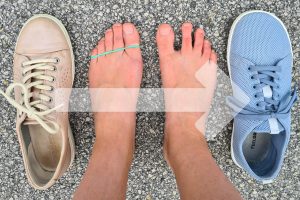
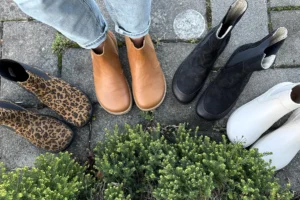
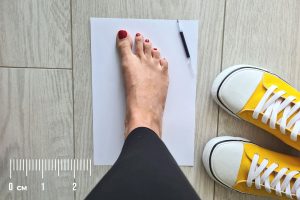
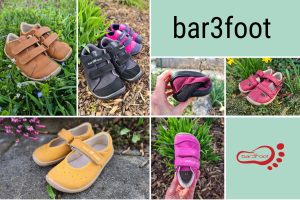
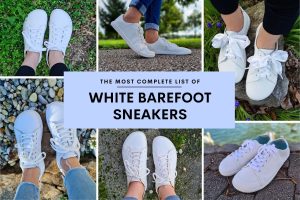

Thank you so much for reviewing hiking shoes!!
What is your recommendation for extra wide, small feet (square 22×10 cm) for hiking in the mountains (rocky terrain not soft forest soil)?
I have been looking desperately for over one year…. Thank you 🙏🙏🙏
Hi,
we have a guide to the best barefoot hiking shoes available here: https://barefootuniverse.com/best-barefoot-hiking-shoes/. There, you can find all the sizing and fit recommendations, along with detailed descriptions of how they perform on different terrains.
Hi there,
I am looking for leather hiking boots with leather lining and a gusseted tongue, suitable for a bit higher volume. Can you help me?
Thank you!
Hi Anya, in this post we listed all available barefoot hiking boots, including material, sizing, and fit information: https://barefootuniverse.com/best-barefoot-hiking-shoes/